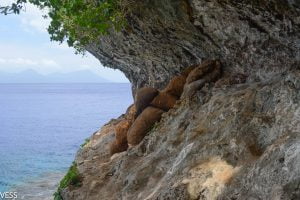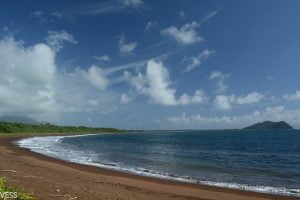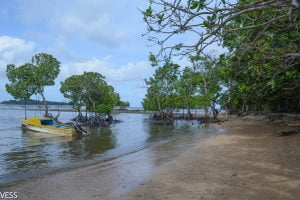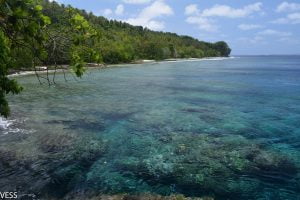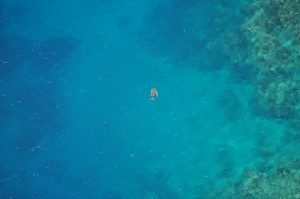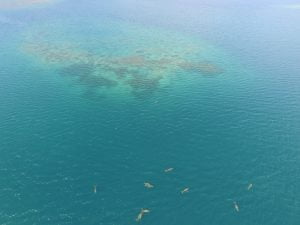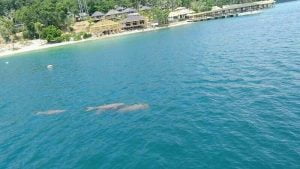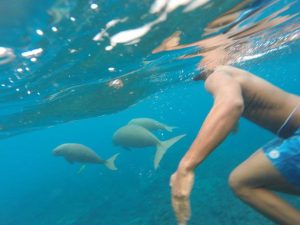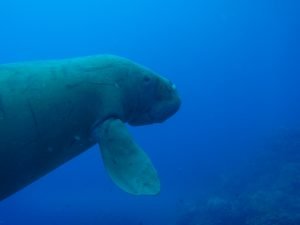Policy Case Study
Data-Driven Research Results in Sound Policy in Vanuatu
Policy is one of the four key components of the Dugong and Seagrass Conservation Project and a vital element in the conservation process. To enshrine these species’ protection in legislation is to translate all the research and awareness-raising conducted by our projects over the past four years into a tangible, enforceable positive impact on the character of nations for generations to come.
To this end, armed with sufficient passion and backed by scientific data, our Policy projects have won over governments and authorities to the cause of dugongs and their seagrass habitats around the world.
Data-driven advocacy
As was the case for the other DSCP Policy projects, our Vanuatu project sought to tackle key barriers to dugong and seagrass conservation by developing an effective national legal framework to integrate biodiversity safeguards for dugongs and their seagrass habitats.
Vanuatu became a signatory to the CMS dugong Memorandum of Understanding in 2010 and dugongs are protected under the nation’s Fisheries Act, which designates the whole of the Vanuatu Exclusive Economic Zone as a marine mammal sanctuary that prohibits the killing, harming and harassing of all marine mammals.
The Vanuatu Fisheries Department is responsible for the enforcement of this act, and various government departments have participated in dugong conservation activities in the past, but there has never been any formal national plan for the conservation and management of dugongs and seagrass.
Influencing policy almost always requires a solid body of scientific evidence as the basis for urgent and meaningful legislative or regulatory change; and in Vanuatu, little research had focused on the status of dugongs and seagrasses before the launch of the DSCP.
This problem of a lack of information, coupled with the resultant limited awareness of the conservation status of dugongs and seagrasses, have prevented the successful integration of conservation measures into relevant national legislation on the use of marine resources and coastal development, including marine tourism development. It is a problem that exists throughout the eight countries in which the DSCP has been implemented.
| VU1 | Project Facts |
|---|---|
| Project Type: | Policy |
| Project ID: | VU1 – 2139 |
| Objectives: | To develop recommendations for a National Plan for the Conservation of Dugongs and their Seagrass Habitats, identify areas important for dugongs and seagrasses conservation in Vanuatu and raise awareness about dugongs and seagrasses amongst the local communities in these areas. |
| Country: | Vanuatu. |
| Lead Partner: | Vanuatu Environmental Science Society. |
| Supporting Partners: | Department of Environmental Protection and Conservation and the Vanuatu Fisheries Department. |
| Implementation Period: | July 1, 2015–September 30, 2018. |
| GEF Funding: | US$ 150,791.32. |
| Partners' Funding: | in-kind, $16,175; cash, $67,167; leveraged funds, $104,087. |
| Relevant global project components: | Component 1 – Improved site-level management at globally important sites for dugongs and seagrasses; Component 3 – Removal of knowledge barriers; Component 4 – Mainstreaming of dugong and seagrass conservation priorities into national and regional policies and plans (NFC projects). |
Project activities
Surveys
A survey team travelled to 32 islands throughout each of Vanuatu’s six provinces and conducted 530 interviews to gather information on where people see dugongs and seagrass, and about their fishing habits. The project employed the Convention on the Conservation of Migratory Species of Wild Animals (CMS) Standardised Dugong Catch/By-catch Questionnaire, which was expanded to include questions on tourism interaction to assess the threat the industry may pose to dugongs in Vanuatu.
The CMS questionnaire is a standardised survey tool that allows for rapid assessment of the presence, distribution and status of dugongs, and for monitoring changes over time. This is important for advocacy purposes, as policy changes must be based on robust scientific data that are comparable and consistent.
Such data is particularly influential when translated into tangible, visual materials that reflect the facts on the ground. In the case of the Vanuatu project, a GIS consultant was engaged to create maps of the survey data to visualise the results. Sixty-nine maps were produced and were used to identify dugong “hotspot” areas in Vanuatu where significant populations exist.
These kinds of materials serve as the basis for initial policy actions, such as selecting locations for protected areas. They were used to identify Special and Unique Marine Areas of Vanuatu, as part of the government’s Marine Spatial planning work, and are now being used to identify locations to be incorporated into a network of marine protected areas by 2020.
The information from the survey has also been employed in the drafting of the National Biodiversity Strategy and Action Plan (NBSAP) 2018–2030 and the National Environment Policy and Implementation Plan 2016–2030, and in planning for a GEF6 Project.
Inspiring national legislation to protect dugongs and seagrass meadows
-
- To lay the foundations for national legislation, our Policy projects compile recommendations that may be incorporated into existing legislation or integrated into National Action Plans. As in the case of the Vanuatu project, they are often based on documents such as the global Dugong action plans of the CMS Dugong MoU or the Pacific Regional Environment Programme (SPREP) dugong action plan, and are adapted locally using in-country expertise.
- Policy change takes time, however, and interim guidelines can be a useful means to achieve immediate action whilst laws or regulations make their way through the relevant bureaucracies. These can also be referred to by official agencies during this initial period and also ultimately be incorporated into legislation itself. For example, the Vanuatu project issued general guidelines for interaction with dugongs and a code of conduct for tourism operators when in contact with dugongs, and the Vanuatu Department of Tourism (DoT) has since committed to referencing these guidelines in its minimum standards, compelling tourism operators to adhere to them.
- These documents, and the broader recommendations developed by the Vanuatu project, are also now influencing the design of a National Plan of Action for Dugongs and their Seagrass Habitat that will guide dugong conservation up to 2025. Not only that, they have the potential to be re-worked and applied to other species facing common threats throughout the dugong’s range, including marine turtles.
- Meanwhile, data gathered from Vanuatu has also now been integrated into the draft Dugong Action Plan that forms part of the SPREP conservation programme for the period 2018–2022.
- The Vanuatu experience speaks to the potential long-term impacts of our DSCP policy projects around the world. By influencing policy in these eight key nations, we have inspired and contributed to the most significant raft of legislative additions and amendments concerning dugongs and their seagrass habitats in history. It is our hope that this will form the basis of a genuine and lasting resurgence in the species’ populations worldwide.
DCIM100MEDIADJI_0073.JPG OLYMPUS DIGITAL CAMERA
